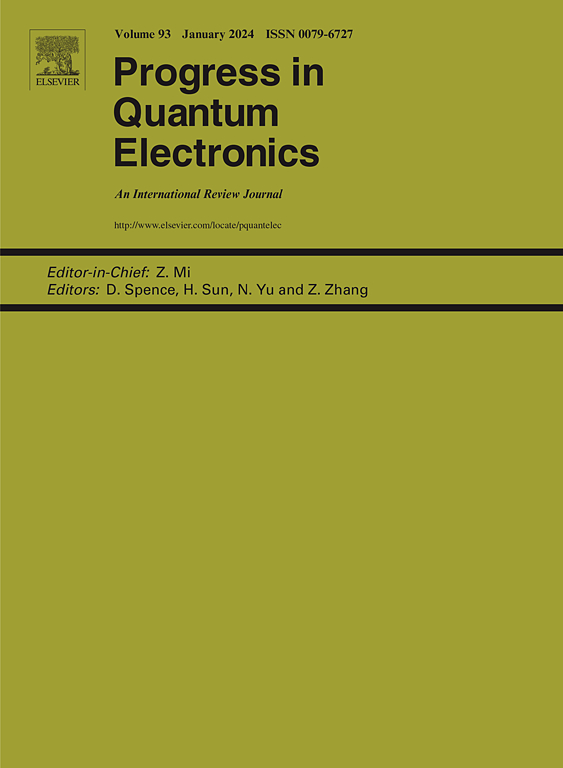二维范德华材料中的电可重构智能光电子学
IF 12.5
1区 物理与天体物理
Q1 ENGINEERING, ELECTRICAL & ELECTRONIC
引用次数: 0
摘要
在光电子学中,实现电可重构性是至关重要的,因为它使编码、解码、操纵和处理光携带的信息成为可能。近年来,二维范德华材料已成为实现可重构光电器件的有前途的平台。与具有大块晶格的材料相比,二维vdW材料由于高表面体积比、量子约束、减少介电屏蔽效应和强偶极子共振而具有优越的电可重构性。此外,它们独特的频带结构和相关的拓扑结构和量子几何结构提供了新颖的调谐能力。本文旨在建立二维材料中可重构光电子学的基础物理学与其在智能光电子学中的新兴应用之间的联系。我们首先研究了二维vdW材料的各种电可重构特性和潜在的调谐机制。然后重点介绍了这些器件的新兴应用,包括动态强度、相位和极化控制以及智能传感。最后,我们讨论了该领域未来发展的机会。本文章由计算机程序翻译,如有差异,请以英文原文为准。
Electrically reconfigurable intelligent optoelectronics in 2-D van der Waals materials
In optoelectronics, achieving electrical reconfigurability is crucial as it enables the encoding, decoding, manipulating, and processing of information carried by light. In recent years, two-dimensional van der Waals (2-D vdW) materials have emerged as promising platforms for realizing reconfigurable optoelectronic devices. Compared to materials with bulk crystalline lattice, 2-D vdW materials offer superior electrical reconfigurability due to high surface-to-volume ratio, quantum confinement, reduced dielectric screening effect, and strong dipole resonances. Additionally, their unique band structures and associated topology and quantum geometry provide novel tuning capabilities. This review article seeks to establish a connection between the fundamental physics underlying reconfigurable optoelectronics in 2-D materials and their burgeoning applications in intelligent optoelectronics. We first survey various electrically reconfigurable properties of 2-D vdW materials and the underlying tuning mechanisms. Then we highlight the emerging applications of such devices, including dynamic intensity, phase and polarization control, and intelligent sensing. Finally, we discuss the opportunities for future advancements in this field.
求助全文
通过发布文献求助,成功后即可免费获取论文全文。
去求助
来源期刊

Progress in Quantum Electronics
工程技术-工程:电子与电气
CiteScore
18.50
自引率
0.00%
发文量
23
审稿时长
150 days
期刊介绍:
Progress in Quantum Electronics, established in 1969, is an esteemed international review journal dedicated to sharing cutting-edge topics in quantum electronics and its applications. The journal disseminates papers covering theoretical and experimental aspects of contemporary research, including advances in physics, technology, and engineering relevant to quantum electronics. It also encourages interdisciplinary research, welcoming papers that contribute new knowledge in areas such as bio and nano-related work.
 求助内容:
求助内容: 应助结果提醒方式:
应助结果提醒方式:


